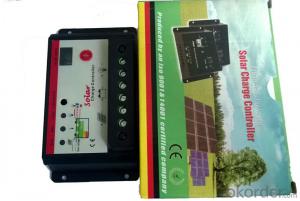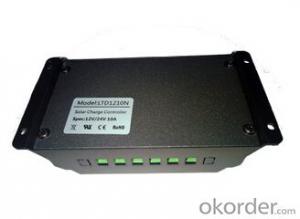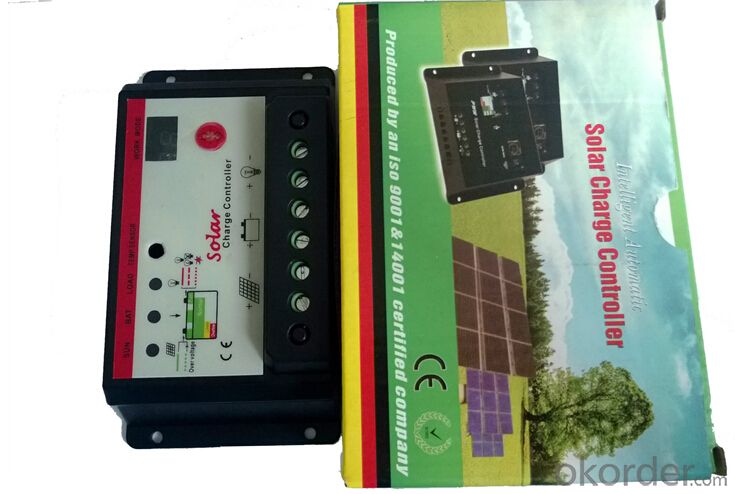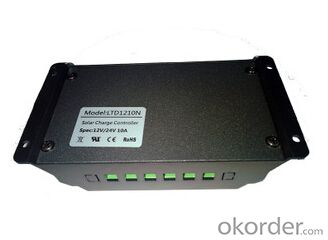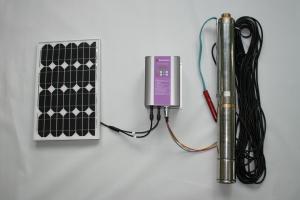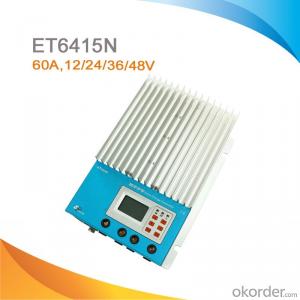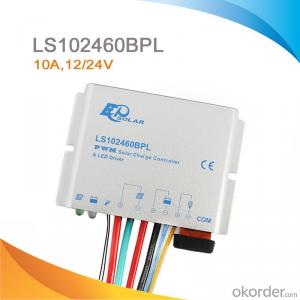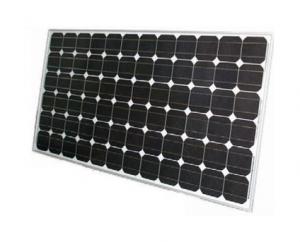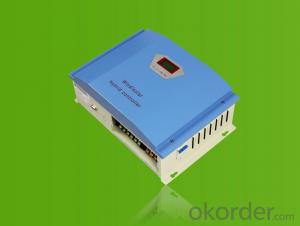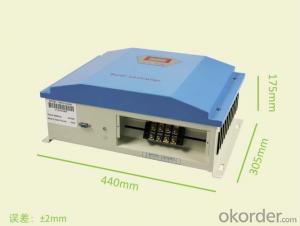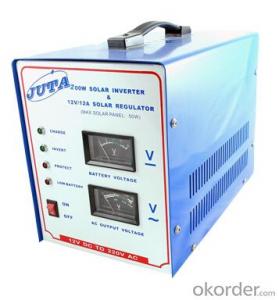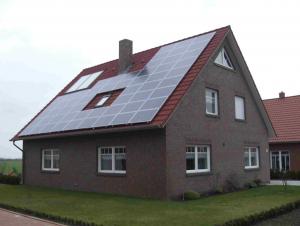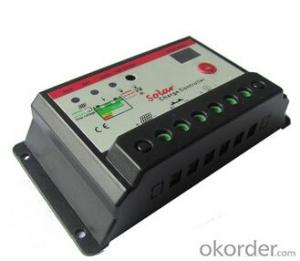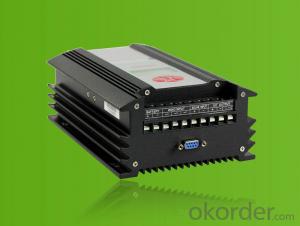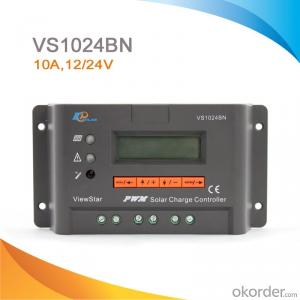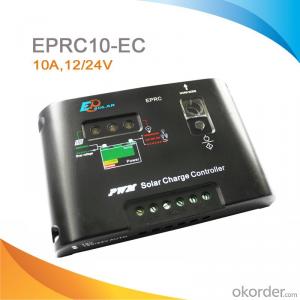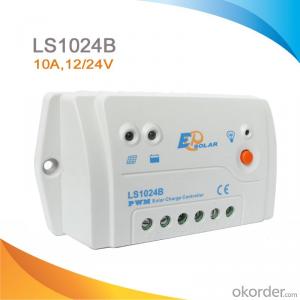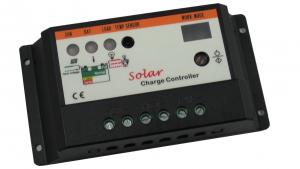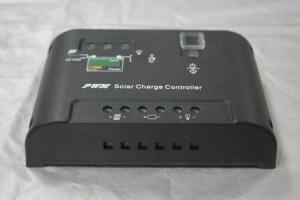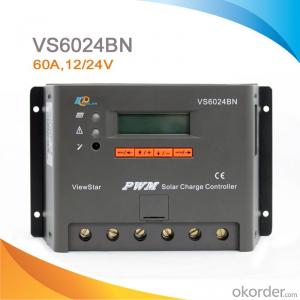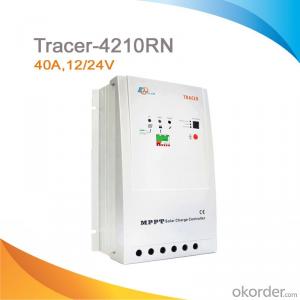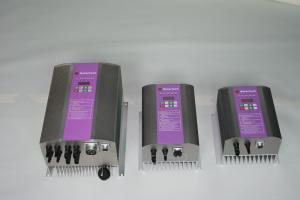2 Solar Charge Controllers in Parallel for Street Light System - Bygd SC1024S
- Loading Port:
- Shanghai
- Payment Terms:
- TT OR LC
- Min Order Qty:
- 10 unit
- Supply Capability:
- 50 unit/month
OKorder Service Pledge
OKorder Financial Service
You Might Also Like
1. Structure of BYGD Solar Charger Controller for Street light system Model SC1024S
This Solar Charger Controller is designed for street light system, which is updated with new technology to realize intelligentialization of control mode, and prolong service lifetime of all the components by improving the efficiency of operation. This Model is prior to the old generation in the aspects as follows: 12V/24V automatical adaption, control and set button changed into tact key, larger contact terminal can offer wire of 6 m2.
2. Main Features of BYGD Solar Charger Controllerfor Street light system Model SC1024S
◆ double LED digital display, clear for observation
◆ recharging mode by three phases
◆ PWM pulse modulated recharging technology
◆set light-dependent control and 1-13hous time control
◆short circuit protection, overvoltage protection, overcurrent protection and lighting protection
◆standy current no more than 5mA
3. BYGD Solar Charger Controllerfor Street light system Model SC1024S Images
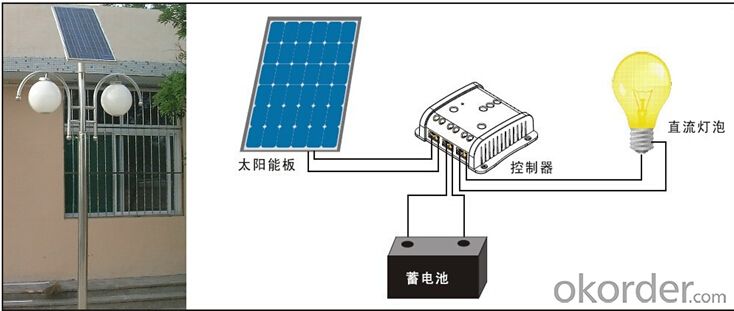
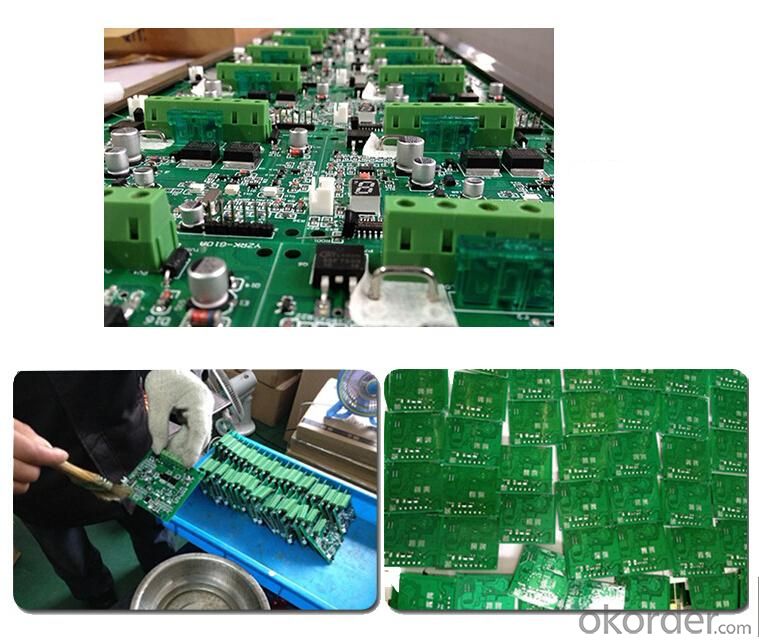
4.BYGD Solar Charger Controllerfor Street light system Model SC1024S Specification
External Size:133mm×70mm
Mounting hole Size:126mm×50mm
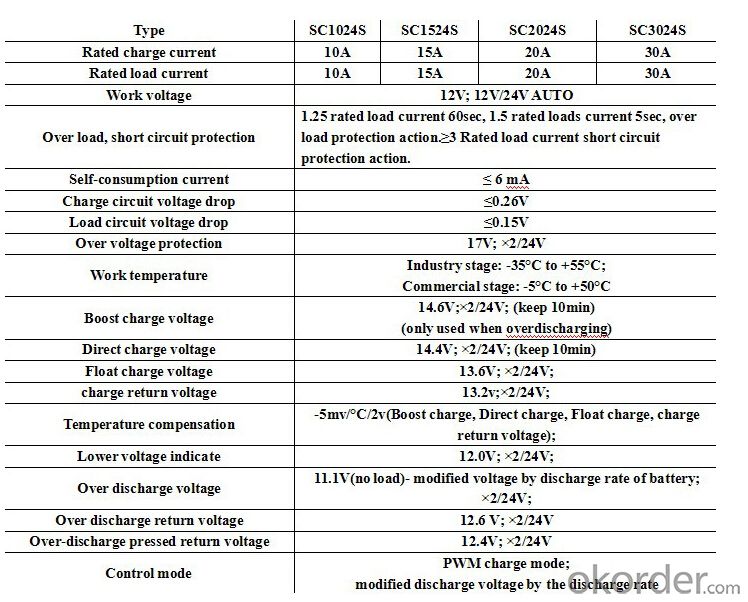
5. FAQ
(1) Why use PWM charge mode?
Our solar charger controller uses PWM in the main circuit for charge in order to reduce the voltage loss of the loop, which can improve the charging efficiency by 3-6% compared to the ones not useing PWM.
(2) What is the advantage of double digital display?
Double digital display make the code more clear and reasonable to show the correct mode so as to avoid misunderstanding.
(3)Is this new model more expensive that the old one?
Surely yes, because new model has the terminal bigger than that of the old model, which costs a few times more, the price of the product will be increased accrodingly.
- Q: What is the maximum input voltage that a solar controller can handle?
- The maximum input voltage that a solar controller can handle depends on the specific model and its specifications. It can range from as low as 12 volts to as high as 100 volts or more. It is important to consult the manufacturer's guidelines or product specifications to determine the maximum input voltage for a specific solar controller.
- Q: Can a solar controller be used with solar panels that are connected to an inverter?
- Yes, a solar controller can be used with solar panels that are connected to an inverter. The solar controller helps regulate and optimize the charging process of the batteries connected to the solar panel system, regardless of whether an inverter is present or not.
- Q: Can a solar controller be used with a solar-powered spa or wellness center?
- Yes, a solar controller can be used with a solar-powered spa or wellness center. A solar controller is designed to regulate the flow of electricity from solar panels to the batteries or appliances, ensuring optimal energy utilization. In the context of a spa or wellness center, a solar controller can effectively manage the power generated by solar panels, enabling the facility to operate efficiently and sustainably.
- Q: How do I determine the appropriate size of a solar controller for my system?
- To determine the appropriate size of a solar controller for your system, you need to consider the maximum current and voltage your solar panels can generate. Calculate the total current output of your panels and ensure that the solar controller you choose can handle this amount. Additionally, check the maximum input voltage of your panels and select a controller with a higher voltage rating to accommodate any fluctuations. It's always advisable to consult with a professional or refer to the manufacturer's specifications for accurate sizing.
- Q: What is the difference between a solar charge controller and a solar regulator?
- A solar charge controller and a solar regulator are essentially the same thing. They are electronic devices used in photovoltaic systems to regulate the flow of electricity between the solar panels and the battery bank. Both terms are used interchangeably to refer to the same device.
- Q: Can a solar controller work with different types of solar panels?
- Yes, a solar controller can work with different types of solar panels as long as the voltage and current ratings of the panels are within the specifications and capabilities of the controller.
- Q: Can a solar controller handle power fluctuations from the grid?
- No, a solar controller cannot handle power fluctuations from the grid. A solar controller is designed to regulate and control the charging process of solar panels and batteries, and it does not have the capability to stabilize or handle power fluctuations from the grid.
- Q: Can a solar controller be used with both off-grid and grid-tied systems?
- No, a solar controller cannot be used with both off-grid and grid-tied systems. Off-grid systems require a solar controller to regulate the charging and discharging of batteries, while grid-tied systems do not use batteries and rely on an inverter to convert the DC power from solar panels into AC power for immediate use or feeding back into the grid. Therefore, the controller requirements are different for each system.
- Q: Can a solar controller be used in an industrial solar system?
- Yes, a solar controller can be used in an industrial solar system. A solar controller helps regulate the flow of electricity between the solar panels and the battery bank in a solar system, ensuring optimal charging and preventing overcharging or damage to the battery. In an industrial solar system, where there may be multiple solar panels and a larger battery bank, a solar controller is even more essential to maintain efficiency and protect the system components.
- Q: Can a solar controller be used with both lead-acid and AGM batteries?
- Yes, a solar controller can generally be used with both lead-acid and AGM batteries. However, it is important to ensure that the solar controller is compatible with the specific type of battery being used. Different battery chemistries have different charging requirements, so it is crucial to select a solar controller that supports both lead-acid and AGM batteries or has adjustable charging settings to accommodate both types.
Send your message to us
2 Solar Charge Controllers in Parallel for Street Light System - Bygd SC1024S
- Loading Port:
- Shanghai
- Payment Terms:
- TT OR LC
- Min Order Qty:
- 10 unit
- Supply Capability:
- 50 unit/month
OKorder Service Pledge
OKorder Financial Service
Similar products
Hot products
Hot Searches
Related keywords
